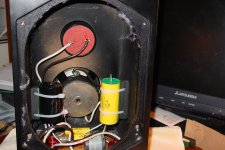I've tried the Clarity MR and Mundorf Silver/Oil in 0.22uF values in a tube amp, where they had to swing 300V peak-to-peak. They sounded very different. I find them about equal overall. Matter of taste.
And, there is this survey Humble Homemade Hifi
and, there is this paper written based on HHMHF's survey Capacitor voltage rating vs performance - The Kitchen - The Classic Speaker Pages Discussion Forums
and, there is this paper written based on HHMHF's survey Capacitor voltage rating vs performance - The Kitchen - The Classic Speaker Pages Discussion Forums
I've tried the Clarity MR and Mundorf Silver/Oil in 0.22uF values in a tube amp, where they had to swing 300V peak-to-peak. They sounded very different. I find them about equal overall. Matter of taste.
Yeah, I forgot to add "YMMV" to my last post. 😀
For speaker crossovers, the exotic capacitors are simply too big. The 1000V ratings are worthless as the crossovers are typically only seeing 3V while playing at a loud 90dB. Might as well spend $5000 converting to a digital active crossover system with multiple high end DACs and amps. No more capacitors needed.
Here's a pic of a 1200V Mundorf Silver/Oil 6.8uF cap in an Ensemble Ref. speaker. I had to locate it off the xover board and up the side of the cabinet. However, the customer loved the sound regardless. The Mundorf is on the left and a Hovland cap is on the right.
Attachments
Very nice, speakerdoctor. But you can try dampening the cabinet with acoustifoam and maybe locate the capacitors further back as to not block the backwave of the woofer.
Mundorf Silver/Oil is actually quite compact for an exotic. The Clarity MR caps are 2x bigger, and the teflons bigger still. Values of 6.8uF would be way too big and expensive.
Mundorf Silver/Oil is actually quite compact for an exotic. The Clarity MR caps are 2x bigger, and the teflons bigger still. Values of 6.8uF would be way too big and expensive.
Very nice, speakerdoctor. But you can try dampening the cabinet with acoustifoam and maybe locate the capacitors further back as to not block the backwave of the woofer.
.
The cabinet is jam packed with polyester fiberfil. I don't have the speaker any more. Like I wrote, the customer was extremely satisfied with the result.
How did the Mundorf SIO react to the tube amp heat?I've tried the Clarity MR and Mundorf Silver/Oil in 0.22uF values in a tube amp, where they had to swing 300V peak-to-peak. They sounded very different. I find them about equal overall. Matter of taste.
Does some one compared these two caps ?
The application is crossover filter for loudspeakers.
I know this is a very old thread, but...
We recently developed a somewhat complex x-over circuit for the Open Source Monkey Coffin loudspeaker. The development and prototyping was done using Mundorf "MCap Classic" caps. These no-nonsense MKP capacitors have been around for a long time. They work well, sound good, and don't cost an arm and a leg. The idea of using the Classic MCaps was to keep the costs down during development, when parts need to be changed here and there in order to find the right part values. Also, it was easy to get the Mundorf caps from a dealer very close from where I live.
Once the x-over prototypes were good, I moved on to build the final x-overs, and I decided to use the "high-end" Mundorf capacitors. I used different incarnations of the MCap Evo types made with (snake?) oil, expensive metals, and some uncommon winding geometries. I assumed these parts would result in even better sound. Haha, hah, hachrhaphm (nervous laugh, followed by caughing). With the expensive "high-end" caps, the midrange was bloated and the the treble had an awkward glare. It wasn't just a small effect. It was so bad that I wanted to turn of the music just after a few minutes. I have no good technical explanation about what's happening, but it seems to me the exotic materials and manufacturing process seem to make these caps behave differently than an "ideal" capacitor.
I revertd the x-overs to the no-nonsense "Classic" MCaps, and all was good. I could have left it there. However, I still wanted to see if/how it would be possible to improve on the Classic MCaps, so I tried the ClarityCaps CMR types. Unlinke the "high end" Mundorfs, the overall sound balance of the speaker was the same as with the standard MCaps, just as it should be. In addition, the CMRs are more transparent than the MCap Classic. Great sound, no complaints. The CMRs stay!
It's hard to say if the CMRs are worth the money, because that's something that everyone needs to consider by him/herself. However, I can say that the "high end" Mundorfs are not worth my money whenever I am looking for a good, neutral cap. No more "high end" Mundorf MKPs for me.
Last edited:
Did you spend some time "breaking them" before listening to them? It is my understanding, that some capacitors need a bit of functional time before they are able to work as specified.
One example of this, are electrolytics caps. Most datasheet will tell you to connect them on DC to the max specified voltage, then wait until the leakage current stabilise to a specified value prior to use. It does take quite a while at times to acheive this. It could be argued that a similar process needs to be done to other type of capacitors.
Cheers,
Eric
One example of this, are electrolytics caps. Most datasheet will tell you to connect them on DC to the max specified voltage, then wait until the leakage current stabilise to a specified value prior to use. It does take quite a while at times to acheive this. It could be argued that a similar process needs to be done to other type of capacitors.
Cheers,
Eric
always amazed to read that caps 'add' sound quality.
Personally stick to Audyn Plus or add a few Miflex caps for high end builds
Personally stick to Audyn Plus or add a few Miflex caps for high end builds
Other capacitors don't use this wet chemical process.It could be argued that a similar process needs to be done to other type of capacitors.
always amazed to read that caps 'add' sound quality.
Caps cannot 'add' sound quality. Every component placed in the signal path will degrade the signal. Some degrade the signal less, or in different ways, than others. This is why components of varying quality and manufacture sound different.
Sound quality is often determined by the weakest link. Introducing 'better' components may just highlight problems elsewhere, especially if the lesser components were compensating in some way.
But one should not completely dismiss that a technical degradation may actually be perceived as an improvement.
//
//
Did you spend some time "breaking them" before listening to them?
No, I did not "break them" 😀
I did play the loudspeakers for a few weeks, but I did not notice any change with the issue of the "high end" Mundorf caps during this "break in" period.
I agree that some mechanical systems (like loudspeaker drivers) may need some hours of "break in" time to settle their mechanical properties (compliance and damping of the suspension parts). However, I don't see what part of a film/foil capacitor would be subject to this. If people report a change of an electronic device during break in, I usually tend to think that the device did not change at all. I think such changes are related to how people perceive ("get used") to the difference in the sound. But the "break in" subject is a tricky subject, and others will have different opinions.
Hi,
When you tried the more exotic mundorf caps and Claritycap CMR, did you replace all the Mcaps or just the ones connected in series (Cmt1 and Ct1 + Ct2)?
/Dominic
When you tried the more exotic mundorf caps and Claritycap CMR, did you replace all the Mcaps or just the ones connected in series (Cmt1 and Ct1 + Ct2)?
/Dominic
Good question. It's been a while, and I don't remember exactly what I did with the Mundorf exotics. I believe it was only the series caps, but not 100% sure. The final build has the Clarity Caps in the series positions, and the down-to-earth Mundorfs in the parallel positions.
Hi! I figured I'd just try and tack onto this thread rather than start a new one. Hoping someone could recommend a good capacitor to replace these on this pair of Kef Reference 201/2 Bookshelf speakers. Also would it be worth changing out the resistors? I know some people would say that different caps dont sound different. Not here to debate that...
Its a true 3 way design with a coaxial tweet/mid combo and a 5.5" woofer beneath.
Frequency cutoffs are around 350hz/2500hz
Ive uploaded some pictures. any advice welcome !
Its a true 3 way design with a coaxial tweet/mid combo and a 5.5" woofer beneath.
Frequency cutoffs are around 350hz/2500hz
Ive uploaded some pictures. any advice welcome !
Attachments
-
 thumbnail_20211030_213620.jpg185.1 KB · Views: 375
thumbnail_20211030_213620.jpg185.1 KB · Views: 375 -
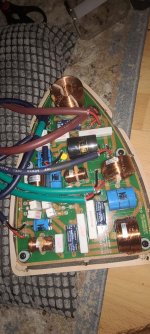 thumbnail_20211030_213624.jpg238.2 KB · Views: 376
thumbnail_20211030_213624.jpg238.2 KB · Views: 376 -
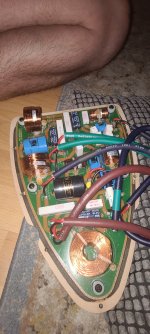 thumbnail_20211030_213628.jpg226.2 KB · Views: 374
thumbnail_20211030_213628.jpg226.2 KB · Views: 374 -
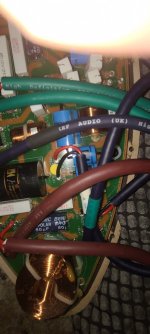 thumbnail_20211030_213645.jpg143.8 KB · Views: 364
thumbnail_20211030_213645.jpg143.8 KB · Views: 364 -
 thumbnail_20211030_213808.jpg104.8 KB · Views: 325
thumbnail_20211030_213808.jpg104.8 KB · Views: 325 -
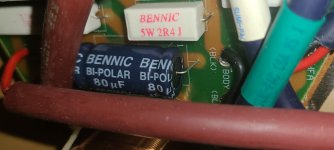 thumbnail_20211030_220641.jpg120.6 KB · Views: 217
thumbnail_20211030_220641.jpg120.6 KB · Views: 217
- Home
- Loudspeakers
- Multi-Way
- Clarity Cap MR vs Mundorf Silver/Oil
